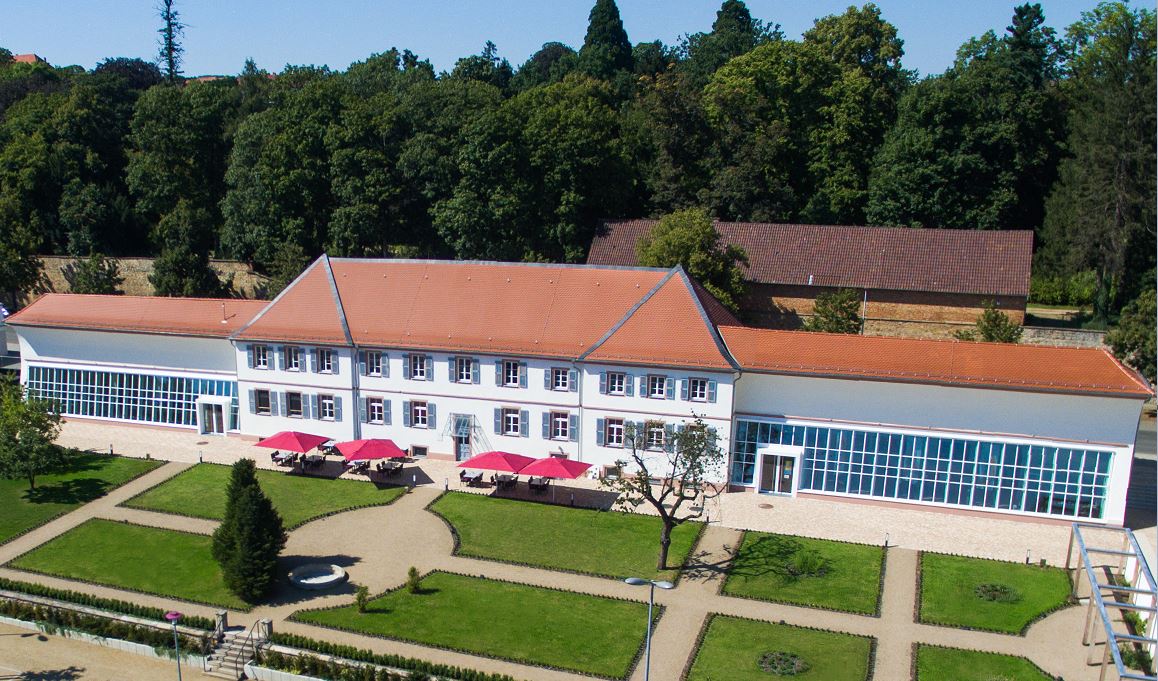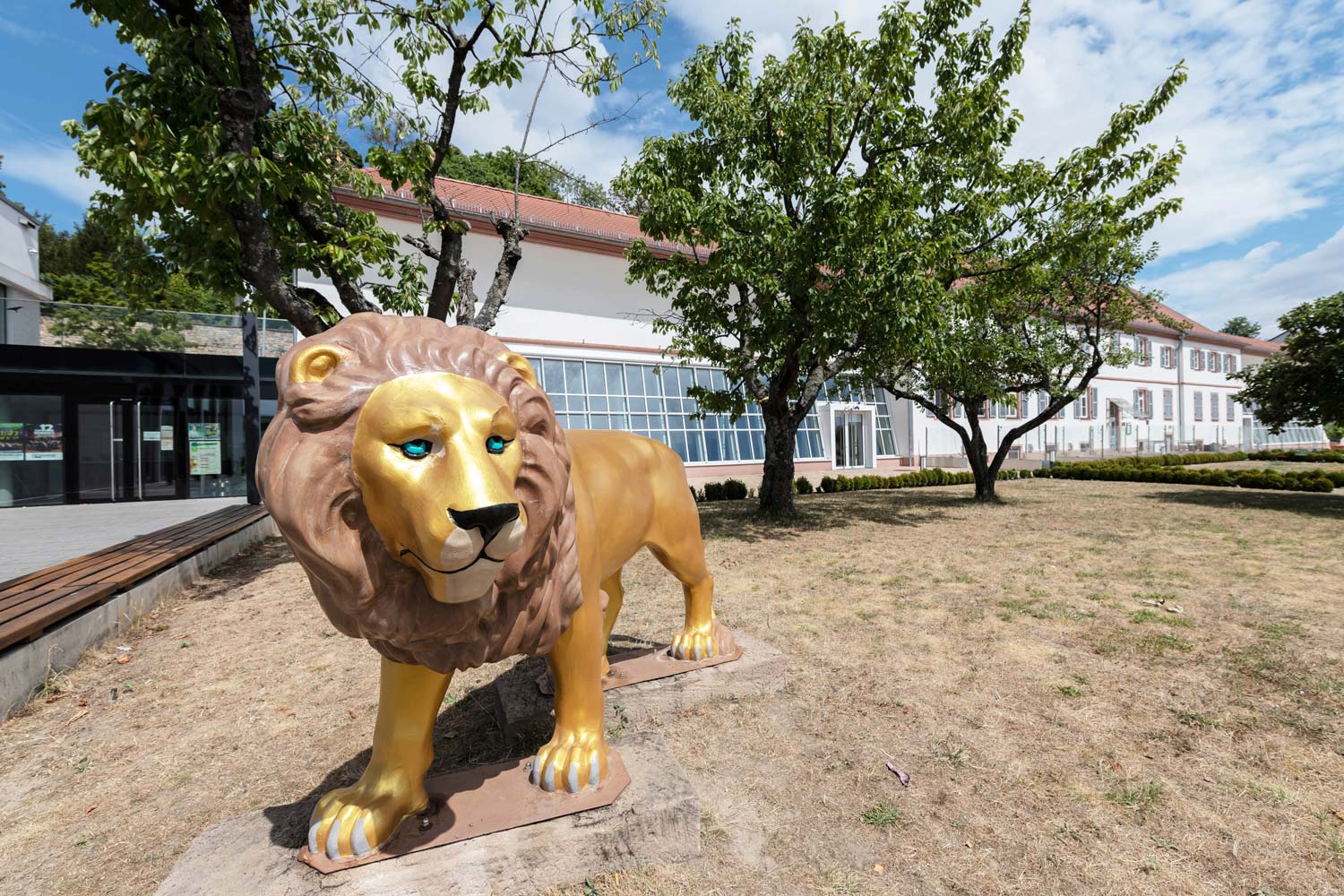Orangery
Baroque garden culture
Baroque garden culture manifests itself not only in palace gardens, but also in orangeries and kitchen gardens.
Orangeries were not only used to overwinter outdoor plants. They also had a courtly function, as you could promenade here in winter like in a gallery. For this reason, an orangery was also built in Kirchheimbolanden in 1778. A gardener’s dwelling with greenhouses at the side had already existed on the site. However, the 1778 project was much larger, with a total length of almost 70 meters.
The “Herrengarten” kitchen garden area, which extended in front of the southern front of the orangery in the 18th century, became a service and residential area in the course of the inner city expansion from the 1980s onwards. The civic “Kappesgärten” (Kappes = white cabbage) adjoined it to the east. One relic of this earlier garden history is a rococo pavilion (“garden shed”) in Gartenstraße.
The orangery, which is now structurally connected to the modern functional building of the “Stadthalle” built in 2011-13, is now a venue for cultural events such as art exhibitions. The municipal culture and events office is also based here.
The golden lion – the heraldic animal of Nassau – in front of the Orangery is a gift from the town of Weilburg.


